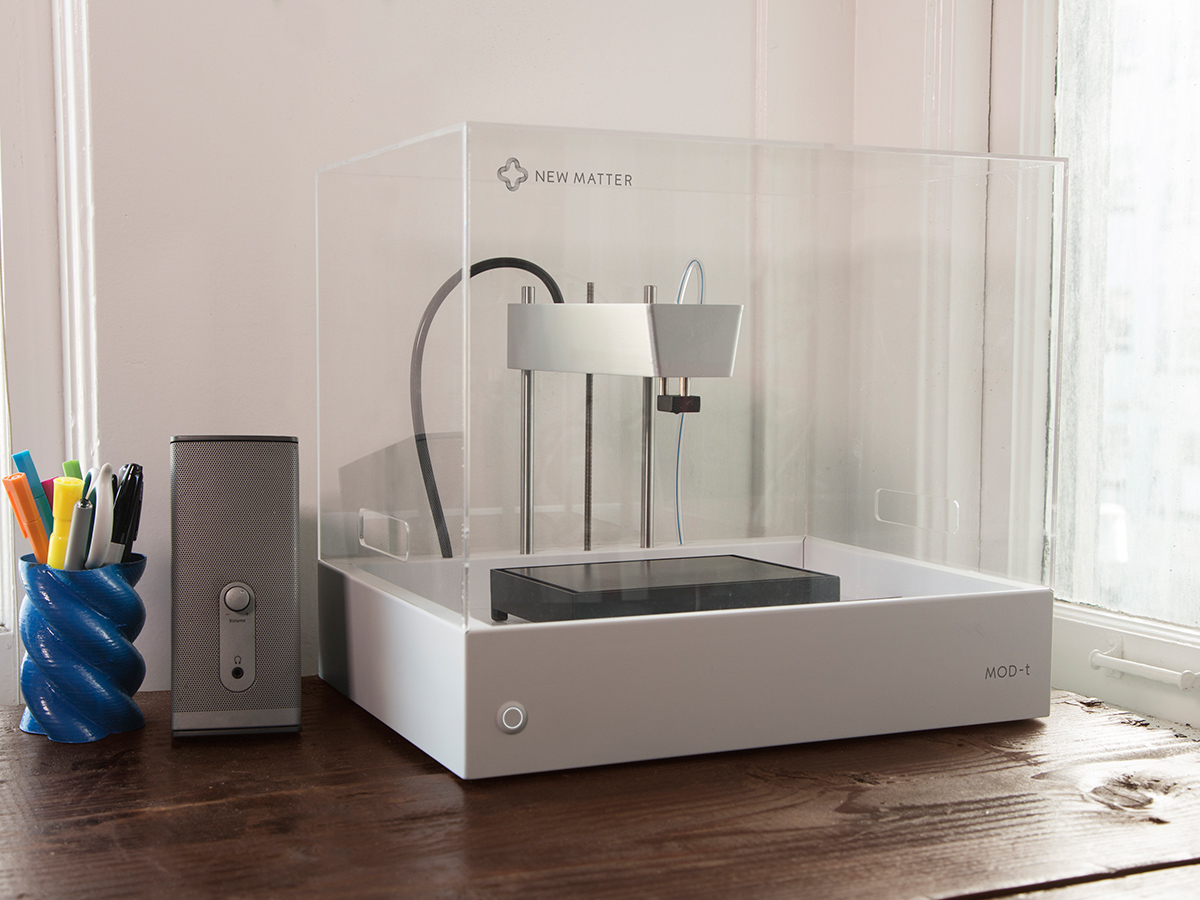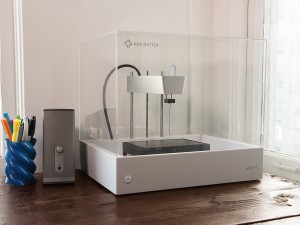June 9, 2014 – When 3D printing started emerging over a decade ago, the technology was cost prohibitive and you needed to be an expert in 3D CAD to exploit the technology. But that is no longer the case as new and cheaper 3D printers keep appearing. The latest and one of the most exciting is the MOD-t a 3D printer that currently is receiving attention from lots of contributors on Indiegogo. The inventors, a company called New Matter, have raised over a half million dollars U.S. in a campaign that started on May 28 of this year. The funding goal was $375,000, surpassed in the first two days after launch.
What makes the MOD-t such a compelling story? First of all the printer is affordable for home users. On the Indiegogo site the early-bird special has sold out at $149.00 U.S. And so has the the next category at $199.00. But you can still get a printer and a one kilogram spool of material filament for a $299.00. And for an extra $50.00 pledge you can get a $75 credit to download designs from the MOD-t online New Matter Store.
But there is more to this 3D printer than it just being inexpensive. The idea behind New Matter’s invention is to make 3D printing ubiquitous. That means easy to use and supported by a global community of developers and artistic creators.
The MOD-t which comes in basic black or white models, is all about simplicity. It uses only a few components and a 2-axis motion to build designs. It comes with software that works with third-party tools and allows you to print and organize your creations. Customize existing design templates or if you have CAD skills and come up with new designs make them available in the New Matter Store for download where you can sell them.
Technical specifications:
The MOD-t is 380 x 280 x 365 millimeters (15 x 11 x 14.5 inches). It weighs 5 kilograms (11 pounds). It works with Windows 7 and above, Android, Apple iOS and Macintosh systems. It has WiFi connectivity and comes with a USB 2.0 port.
The biggest object you can print is 150 x 100 x 125 millimeters (6 x 4 x 5 inches). Of course you can break down an object that’s larger and print it in segments and then assemble it. The printer uses fused filament fabrication and the build material is non-proprietary PLA (polyactic acid) filament, 1.75 millimeters in diameter.
When will you be able to get your own MOD-t. Right now the company’s timeline shows a May 2015 delivery date.










